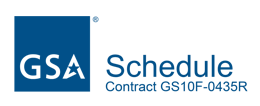Facilitating an Action Plan Review Session
By Michael Wilkinson, Certified Master Facilitator, Managing Director ofLeadership Strategies – The Facilitation Company, and author of The Secrets of Facilitation and The Secrets of Masterul Meetings
When it comes down to it, I believe facilitation is really all about purposeful engagement. In essence, in every session, facilitators need to be able to answer a fundamental question:
“How do you bring people together and take them through a process to achieve a specific purpose, while maintaining high levels of engagement to maximize buy-in, agreement and commitment to action?”
Recently I was facilitating an action plan review meeting for an organization. And when I walked away I thought to myself, “Now, THAT was an effective action plan review session.”
I know, it seems a little boastful to praise yourself. But I realized the session had gone very well and I wanted to be clear as to why, so that perhaps I could repeat it the next time.
But before getting into what I did, let’s build the contrast by identifying what typically happens in an action plan review meeting.
Typical Action Plan Review Meeting
| Purpose | The purpose of an action plan review session is to review the action plans that were developed for each of the strategic priorities that came out of a strategic planning session. |
| Product | When we are done, we want to have a decision on each action plan with any revisions identified.
|
| Typical Process | In the typical action plan review process:
|
Action plan review sessions can be fairly routine with low engagement and only an occasional disagreement coming from top leadership or someone who temporarily forgot about the conspiracy!
A Different Approach
This recent action plan review session was different. And upon reflection, I think I know why. Here is the agenda that was used.
A. Getting Started
B. Action Plan Review
C. Next Steps
|
I believe the key differences were the three shaded items, “Likes and concerns,” “The key questions” and “The response to key questions.”
Likes and Concerns
Prior to the session, the 17 participants in the room received all 13 action plans and instructions to review the action plans prior to the session. (See a recent article on Action Planning to see the format used for the action plans.)
During the “Getting Started” segment, participants worked in teams (I used four teams) and received the following directions.
- Record on green post-its (one per item) up to 5 things your team members say they liked about what they saw in the action plans.
- Record on red post-its (one per item) up to 5 things that concern them about the action plans.
I believe this step got the participants immediately into working mode and made it okay to be critical. Note that they were NOT being critical of any one action plan. They were being critical of the plans as a group. I believe this idea of “general critique” relieved the reluctance to be critical of one another.
The Key Questions
After getting the likes and concerns, I asked the teams to identify what are the one, two, or three key questions we should all have in mind while reviewing the action plans. What questions should we be asking ourselves to ensure that the plans are solid.
I once more had the responses recorded on post-its, which allowed me to have the full group place the post-its into categories and name the categories. The key questions were grouped into four basic categories.
- Does the action plan accomplish the strategy? Is anything missing (e.g., investment info)? Is it realistic?
- Does the action plan go far enough? Does it go too far?
- Are the results of the action plan worth the investment? Are future costs included and accounted for? Do we have adequate existing resources?
- Is the action plan monitorable? Is there clear ownership of the actions and who is responsible? Is the action plan not only monitorable, but meaningfully monitorable?
By the way, I thought these were great questions. They seemed to address the concerns that people had cited and also provided a critical lens through which to view each action plan.
Response to Key Questions
Following the presentation and general questions, each of the four teams took one of the questions and had to answer if the action plan addressed that question. If it did not, the team recommended ways, or asked the presenter to recommend ways, to better address the question. The facilitator rotated the question that each team was assigned in a predictable way so that people would know which question was assigned to their team.
I believe this last step of having the teams respond to the key questions encouraged people to be listening with a specific view in mind and encouraged critical input since their “team” was on the line to give the critique.
Reflection
Yes, when it comes down to it, I believe facilitation is really all about purposeful engagement. And on this day, I think the process helped drive purposeful engagement, meaningful discussion, and a result that included high levels of buy-in.
* * *
Interested in learning more facilitation techniques? Check out our course, The Effective Facilitator.
Michael Wilkinson is the Managing Director of Leadership Strategies – The Facilitation Company, and a much sought after trainer, facilitator and speaker. He is a Certified Master Facilitator and a Certified Professional Facilitator. As a past president of the Southeast Association of Facilitators and a board member of the National Institute of Facilitation, Michael is a national leader in the facilitation industry. You can get more tips from either of Michael’s books, The Secrets of Facilitation or The Secrets to Masterful Meetings. You can receive a signed copy through our website.

